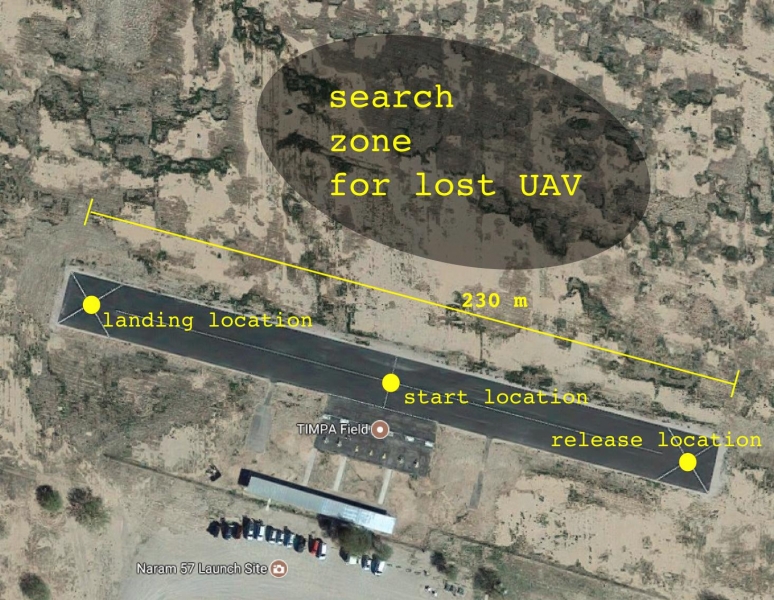 2019 NSF Student CPS Challenge
2019 NSF Student CPS Challenge
2019 CPS Challenge
"No robot left behind!"
May 14-16 2019
TIMPA airfield, 3250 N Reservation Rd, Marana, AZ 85653
IMAGINE
Your friend’s quadrotor went down in a large field, and a storm is coming in. Looking for this lost drone needs a solution that could be repurposed to solve many other problems, like looking for a place to deploy a mosquito sensor.
GOAL
The goal of this challenge is to use a quadrotor aircraft with downward facing camera, and possibly other sensors, to scan an area for a lost aircraft, and recover it safely back to base.
Teams will be provided with powerful simulation tools on the CPS-VO, as well as support with hardware decisions.
Why participate?
-
Develop autonomy for UAV team, in a fun setting.
-
Engage in agile design iterations, both for software and hardware.
-
Experiment with complex mission scenarios using powerful cloud-based simulation tools.
-
Repurpose solution to other problems, such as searching for a strategic location to deploy and recover a sensor probe.
Scoring:
-
30/100 points for detection,
-
40/100 points for recovery,
-
20/100 points for release,
-
10/100 points for landing at base.
If quadrotors are under manual control for any portion of the task, team loses 50% of score for that task.
Ideal teams: The challenge is designed for undergraduate teams participating in a one semester course. Teams should have a mentor who is a graduate student, or a faculty member that can provide direction and suggest technical approaches. All solutions will involve both software and hardware.
Software: Teams should plan to use the Robot Operating System (ROS). Development can be done exclusively with Python, though C++ could be used as well. Sample code for a simple swarm flocking algorithm is available at the project GitHub repository. Potential teams are encouraged to join the project (See the "Join Us" balloon in the top-right corner of the header graphic above) .
Hardware: Any vehicle that supports the ROS compatible PX4 autopilot stack is suitable for the challenge. The vehicle should have on-board companion computer, and cameras that support ROS integration in order to facilitate algorithm implementation. Project organizers have listed a few compatible off the shelf and custom vehicles below.
-
Custom configuration for Penn AiR hexrotor (bill of materials)
Hotel reservation procedure:
Block of rooms (10) on hold until May 10 at:
Holiday Inn Express and Suites
8373 N. Cracker Barrel Rd
Tel: 520.572.4777
Participants must call the hotel directly at the number above and tell them they are with the "NSF Student CPS Challenge"
The block dates are check-in May 13, check-out May 17. The room rate is $99 per night plus tax.
Travel booking form:
Please submit this by Monday April 29. You will also be asked to enter dietary preferences.
https://cps-vo.org/group/CPSchallenge2019/travel
Outdoor challenge schedule:
(lunch provided at TIMPA all three days at noon)
Tuesday May 14 (day 1):
0700-1600: Flight tests and system calibration
Wednesday May 15 (day 2):
0700-1200: Scored attempts
1200-1600: Flight tests for teams who have not finished three scored trials
Thursday May 16 (day 3):
0700-1200: Scored attempts
1200-1500: Result tallying
(two-hour buffer time)
1700-2000: Dinner, competition debrief and awards
Li'l Abner's Steakhouse
8500 N Silverbell Rd, Tucson, AZ 85743
http://lilabnerssteakhouse.com/
Packing list:
We will provide water and electrolytes, lunch, snacks, power cords, power strips, chairs, work tables, soldering iron stations, and miscellaneous tools.
We ask you to keep the following two in mind when packing.
- Drone specific tools and spares -- because things will break, and disassembly and reassembly might be needed on the field.
- Desert attire -- hats, shades, boots, and sunscreen. It will be sunny and hot (~85F peak) outside the shade structure. Airy clothes and hiking socks and boots are recommended in the Sonoran Desert.
Legal requirements:
- Team vehicle should have an FAA registration number. Go to https://faadronezone.faa.gov/ and register under section 336.
- The pilot in charge for each team will need to be a member of the Academy of Model Aeronautics (AMA) http://www.modelaircraft.org/ . The pilot will need to show their membership card at the event.
If you have questions, please contact Jnaneshwar Das
* See Previous CPS Challenges: https://cps-vo.org/group/arcompetitions

